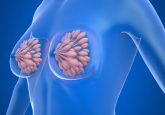Identification of plexiform neurofibroma cell of origin could lead to new therapies

The particular cell type that gives rise to plexiform neurofibroma tumors has been identified by researchers at The University of Texas Southwestern Medical Center (TX, USA). The finding, published recently in Cancer Cell, may lead to the development of new therapies to inhibit the growth of these disfiguring tumors.
Plexiform neurofibromas, which form around nerves, occur in patients with the genetic disorder neurofibromatosis type 1 (NF1), which affects 1 in 3500 individuals. Approximately 30% of NF1 patients develop this type of usually benign tumor.
However, there is a 10% lifetime risk of plexiform neurofibromas within NF1 patients developing into malignant peripheral nerve sheath tumors (MPNSTs). These tumors are a deadly and incurable type of soft tissue cancer.
Lu Le (The University of Texas Southwestern Medical Center), the senior author of the study, argues that determining the cellular origins of plexiform neurofibromas and MPNSTs is a vital step towards the development of effective therapies for these tumors.
“This advance provides new insight into the steps that lead to tumor development and suggests ways to develop therapies to prevent neurofibroma formation where none exist today,” explained Le.
Through the use of genetic labeling for cell fate tracing, the team discovered that plexiform neurofibromas form from Schwann cell precursors in embryonic nerve roots.
“This study addresses a fundamental question in the neurofibromatosis field,” Le commented. “It points to the importance of stem cells and their immediate progenitors in the initiation of tumors, consistent with the notion that these neoplasms originate in a subset of primitive precursors and that most cells in an organ do not generate tumors.”
Le hopes that this research will inform the development of urgently needed drugs that can effectively treat both MPNST and plexiform neurofibromas.
Source: The University of Texas Southwestern Medical Center press release





